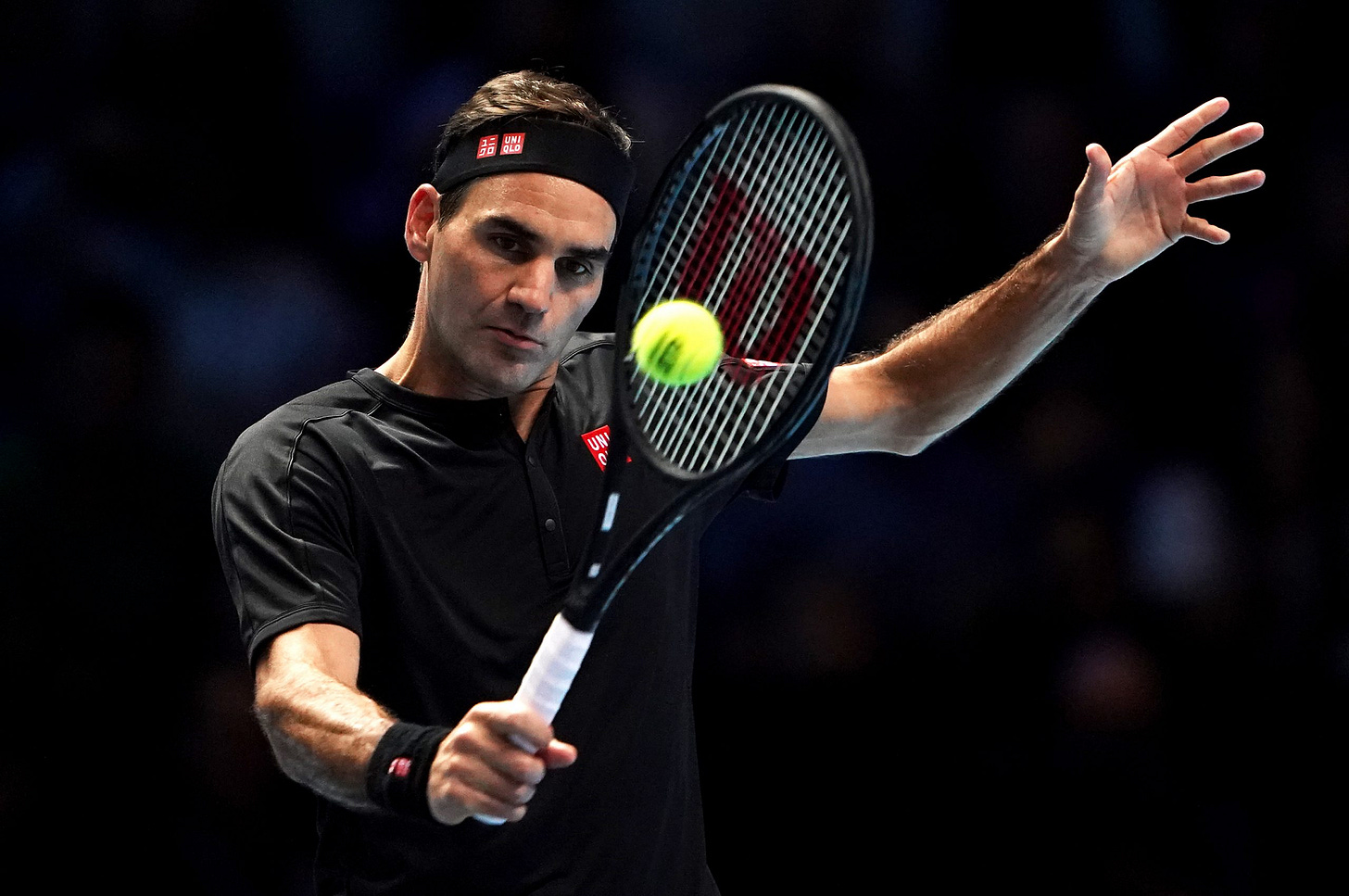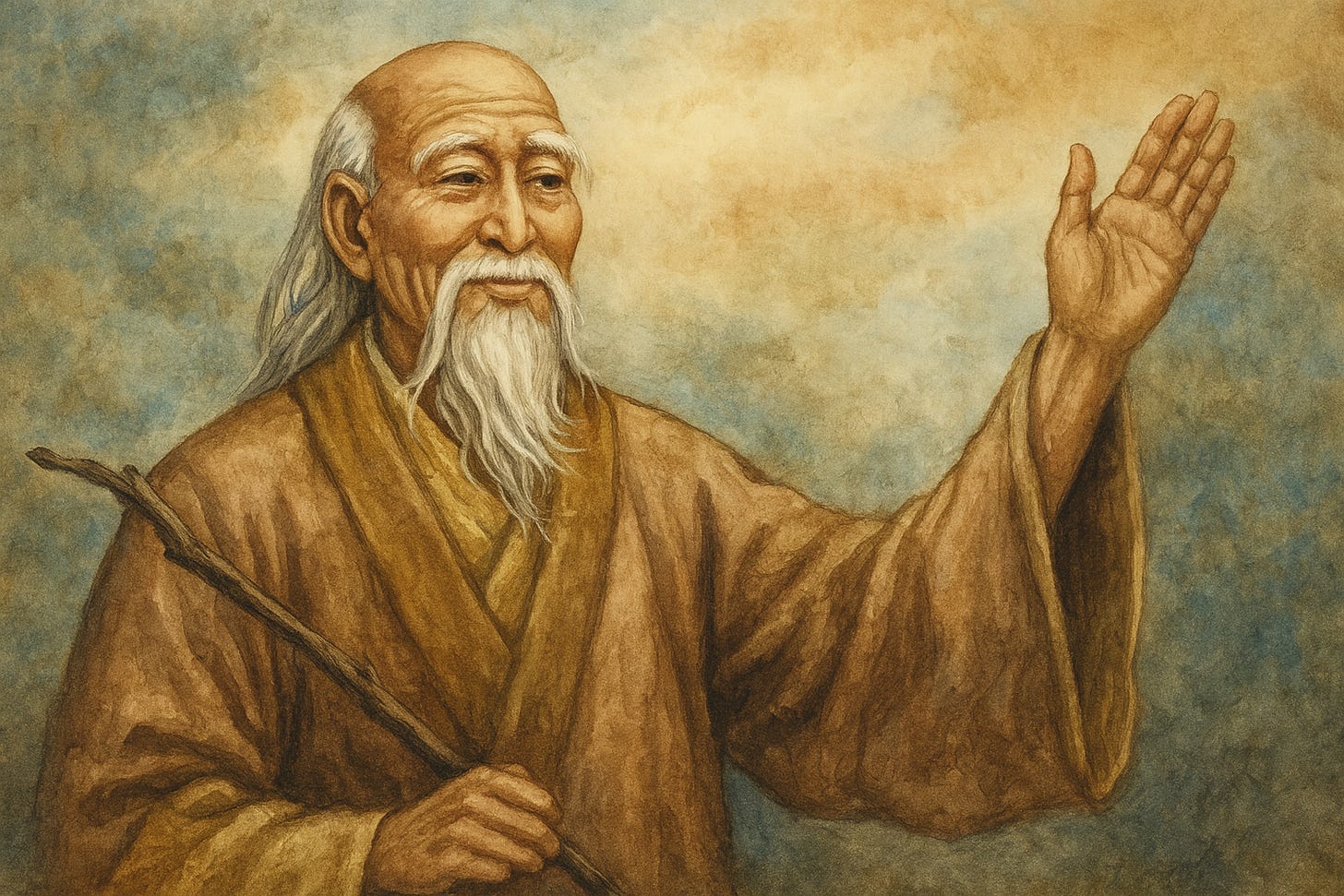When Your Body Forgets to Try {Philosophy}
On Federer, Flow States, and the Taoist Art of Doing Without Doing
Image: tennisworldusa.org
Every late June and early July, the Wimbledon Championships are held in London.
Perhaps the most celebrated event in tennis, Wimbledon is certainly a beautiful spectacle – the way the grass surface and green court are visually offset by the all-white dress code and court lines is unique in sport.
A great part of its beauty is, of course, found in watching the players as they dart forward and back, turn on the spot, and leap to reach seemingly impossible balls. The top professionals’ abilities are all the more impressive when accounting for the speed at which they play, which doesn’t come across on television.
What is most beautiful, however, are those players who make the incredible seem almost effortless.
Ease and grace
Great examples of beautiful tennis playing include Carlos Alcaraz in today’s game and, before him, Rafael Nadal. But the absolute paragon is Roger Federer. As David Foster Wallace memorably claimed in a 2006 essay, watching Federer in his prime was a near-religious experience.
Federer could move with speed and hit with power, but – unlike Novak Djokovic, who is statistically a more successful tennis player – Federer did so with preternatural ease and grace. He often seemed to be in the right place to hit a shot before the ball was sent toward him, and even when he was in the wrong place and had to chase a ball down, he rarely seemed flustered or inelegant. He hardly ever got angry. He didn’t even seem to sweat.
Federer and other such gifted athletes can certainly be studied in terms of sports science. Their strength, flexibility, and pace can all be measured mathematically; their shot choices can be captured as data points. But this doesn’t reflect the overall experience of watching them.
To do that, we have to draw on less precise but much richer descriptive resources. When recalling Federer, Nadal, and Alcaraz at their best, the concept that comes to mind is a Taoist one: non-action.
How, though, could an athlete—who is by definition active—be said to represent non-action?
Non-action
When we first hear of non-action (wu wei), we probably think it means passivity or inaction: simply doing nothing.
In fact, this is far from what Taoists have in mind. Wu wei instead means acting without effort or force.
When we hear this clarification, we might think that Wu Wei refers to reflexes and other instincts, like when a doctor taps you just below the kneecap and your leg jolts. This isn’t quite what Taoists mean, though. Non-action—acting without effort—is more about attaining a state of flow, as opposed to acting with conscious deliberation. Taoists call it acting with the Tao.
The Way
This explanation might help a bit, but it still invites us to ask what the Tao is.
A proper explanation of the Tao would take an article in itself, perhaps several – here we’ll restrict ourselves to saying that, according to Taoists, the Tao is the underlying order of the universe. The Tao isn’t a thing, or even a God, but instead a hidden force that organises the perceptible universe. The word translates as ‘way’ or ‘path’, which perhaps conveys the sense of it being about the dynamic workings of the universe.
The most obvious way the Tao works is by uniting the apparent opposites it creates in nature: light and dark, future and past, life and death, and so on. Each half of these pairs requires the other half to give it its identity, to set its boundaries. There is no light without dark, no dark without light, and so, in a sense, each side of the polarity is contained within its opposite—something depicted by the famous yin-yang symbol.
Here’s Lao-Tzu writing in the Tao Te Ching, the foundational text of Taoism:
The Tao is called the Great Mother:
empty yet inexhaustible, it gives birth to infinite worlds.
It is always present within you.
You can use it any way you want. (Verse 6)
In this quote, we get the sense that the Tao is not only the principle of the universe but also something that we can use.
If this all sounds a bit like the Force from the Star Wars films, then that’s not a coincidence: George Lucas borrowed from Taoism when fleshing out the idea in The Empire Strikes Back. In a training scene, Master Yoda tells Luke Skywalker: “My ally is the Force, and a powerful ally it is. Life creates it, makes it grow. Its energy surrounds us, binds us.”
The parallel is not exact, because Taoists hold that the Tao creates all things, rather than being created by life, as Yoda says of the Force – but there’s something common to both in the idea of a natural order, containing both light and dark, that we can access and draw upon.
Try not
Lao-Tzu says above that the Tao is always present within you, and can be used any way you want. But how?
The answer is wu wei, non-action. As we’ve seen, this means acting without willing, renouncing conscious striving and intent, and instead allowing movement to flow naturally. When we do this, we move according to the Tao.
Lao-Tzu says:
Less and less do you need to force things,
until finally you arrive at non-action.
When nothing is done,
nothing is left undone.
True mastery can be gained
by letting things go their own way.
It can't be gained by interfering. (Verse 48)
Once again, we find a partial echo of this Taoist idea in Yoda’s teaching to Luke: “Try not. Do—or do not. There is no try.”
The commonality lies in the injunction to not try. The difference is that Yoda says that there is no such thing as trying, only doing – whereas Lao-Tzu seems to be saying that one certainly can try to achieve things, but that the true mastery of doing involves a releasing of the will.
According to Lao-Tzu, once we do this and embrace spontaneity, freedom, and inspiration, we are moving with the Tao.
The Tao of Tennis
This is, I think, a good description of what Roger Federer and similarly great athletes are capable of. Clearly, throughout their training, they acted with effort, striving to become better and better. But true mastery, as Lao-Tzu says, lies in letting go. And perhaps what we see when we watch a Federer or an Alcaraz play their best tennis is precisely that level of mastery being achieved. They no longer seem to be striving, but playing almost without thinking, simply slotting into the flow of nature – and this is something beautiful that can’t be captured by the stats and analytics.
A closing thought: the above may have given the impression that only the greatest tennis players, martial artists, or other athletes are capable of acting with the Tao. If so, that would be a mistake on my part.
As Taoists are only too keen to stress, living in accordance with the Tao is something that anyone can do, at any moment. In other words, all of us can walk, sit, cook, and eat in accordance with the Tao, if only we renounce striving and allow for the free unfolding of movement.
It is, therefore, absolutely a universal philosophy and religion – even if only a few of us can play tennis like Roger Federer.






Being in flow is difficult, and, yet, becomes easy with practice. Letting go while still acting is key. Stripping the ego and not concerning oneself with how others may view one are the first steps. Removing the competitive urge and simply doing something for its own sake comes next. Then comes the joy of the flow state.